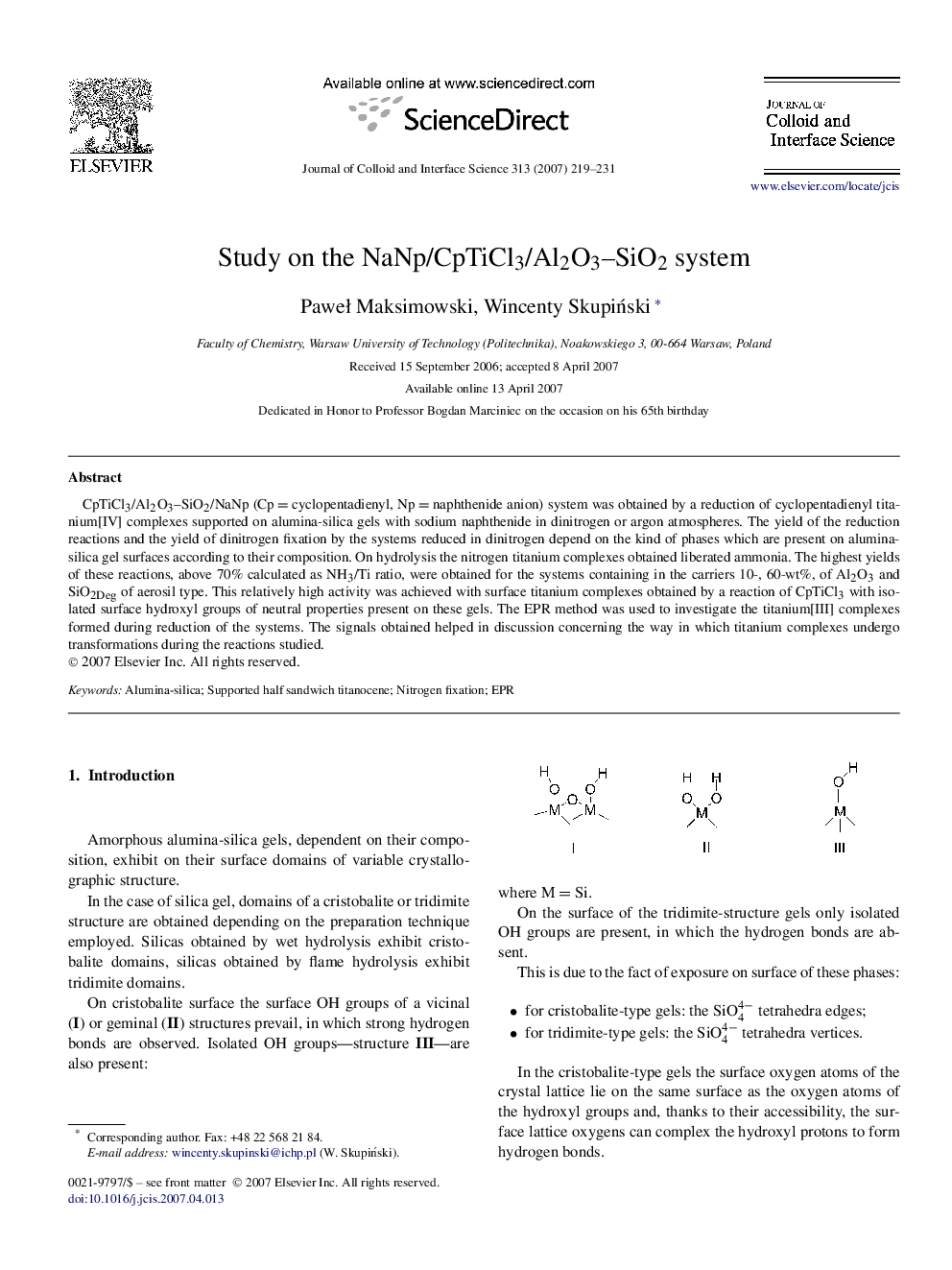| Article ID | Journal | Published Year | Pages | File Type |
|---|---|---|---|---|
| 611928 | Journal of Colloid and Interface Science | 2007 | 13 Pages |
CpTiCl3/Al2O3–SiO2/NaNp (Cp = cyclopentadienyl, Np = naphthenide anion) system was obtained by a reduction of cyclopentadienyl titanium[IV] complexes supported on alumina-silica gels with sodium naphthenide in dinitrogen or argon atmospheres. The yield of the reduction reactions and the yield of dinitrogen fixation by the systems reduced in dinitrogen depend on the kind of phases which are present on alumina-silica gel surfaces according to their composition. On hydrolysis the nitrogen titanium complexes obtained liberated ammonia. The highest yields of these reactions, above 70% calculated as NH3/Ti ratio, were obtained for the systems containing in the carriers 10-, 60-wt%, of Al2O3 and SiO2Deg of aerosil type. This relatively high activity was achieved with surface titanium complexes obtained by a reaction of CpTiCl3 with isolated surface hydroxyl groups of neutral properties present on these gels. The EPR method was used to investigate the titanium[III] complexes formed during reduction of the systems. The signals obtained helped in discussion concerning the way in which titanium complexes undergo transformations during the reactions studied.
Graphical abstractFigure optionsDownload full-size imageDownload as PowerPoint slide
